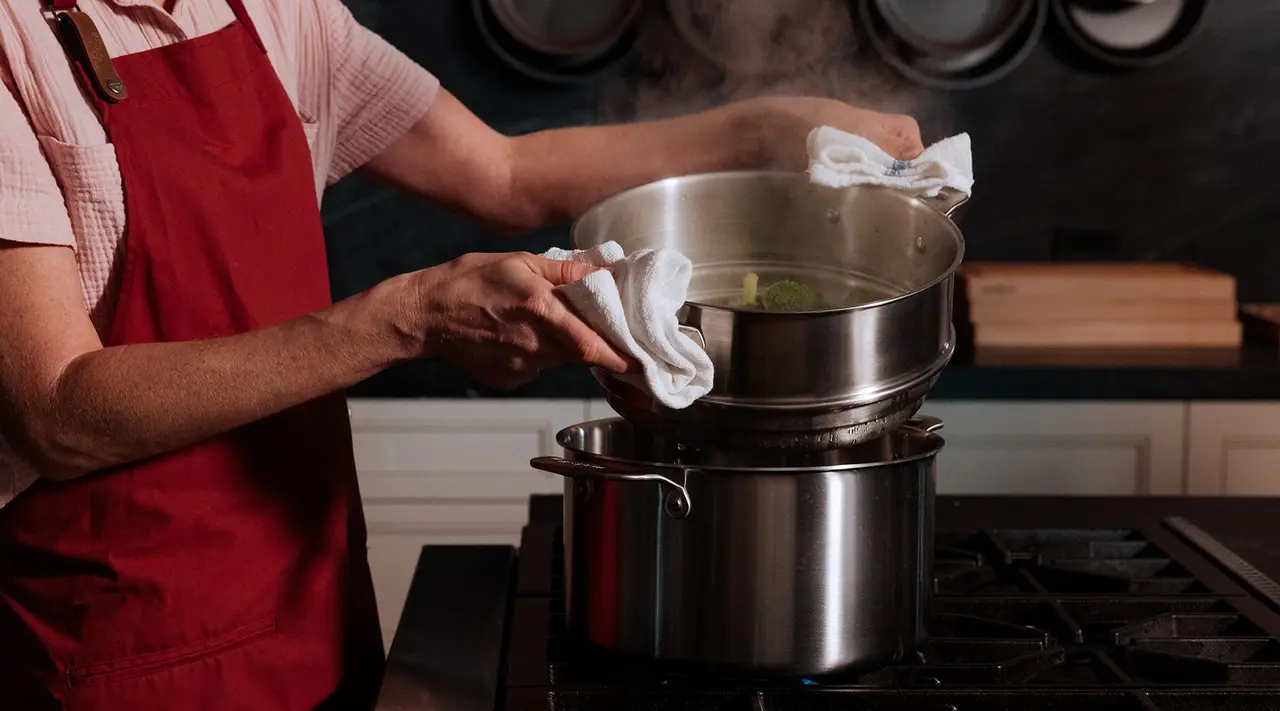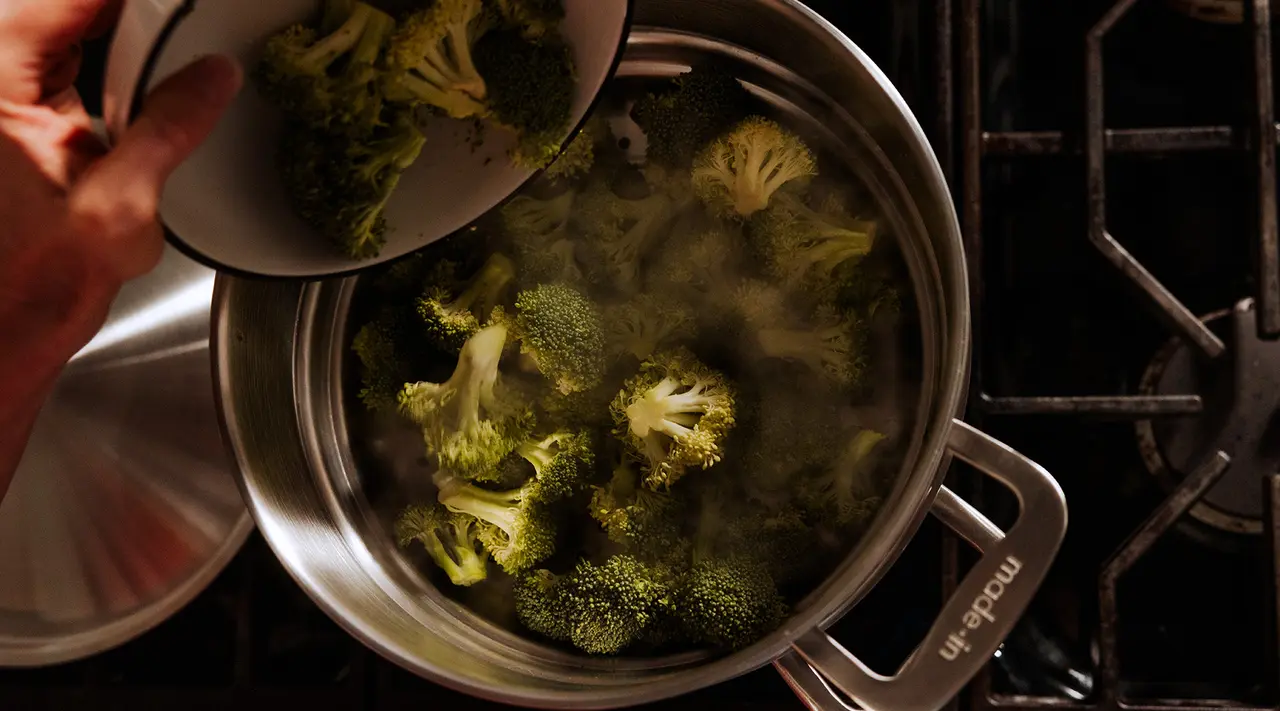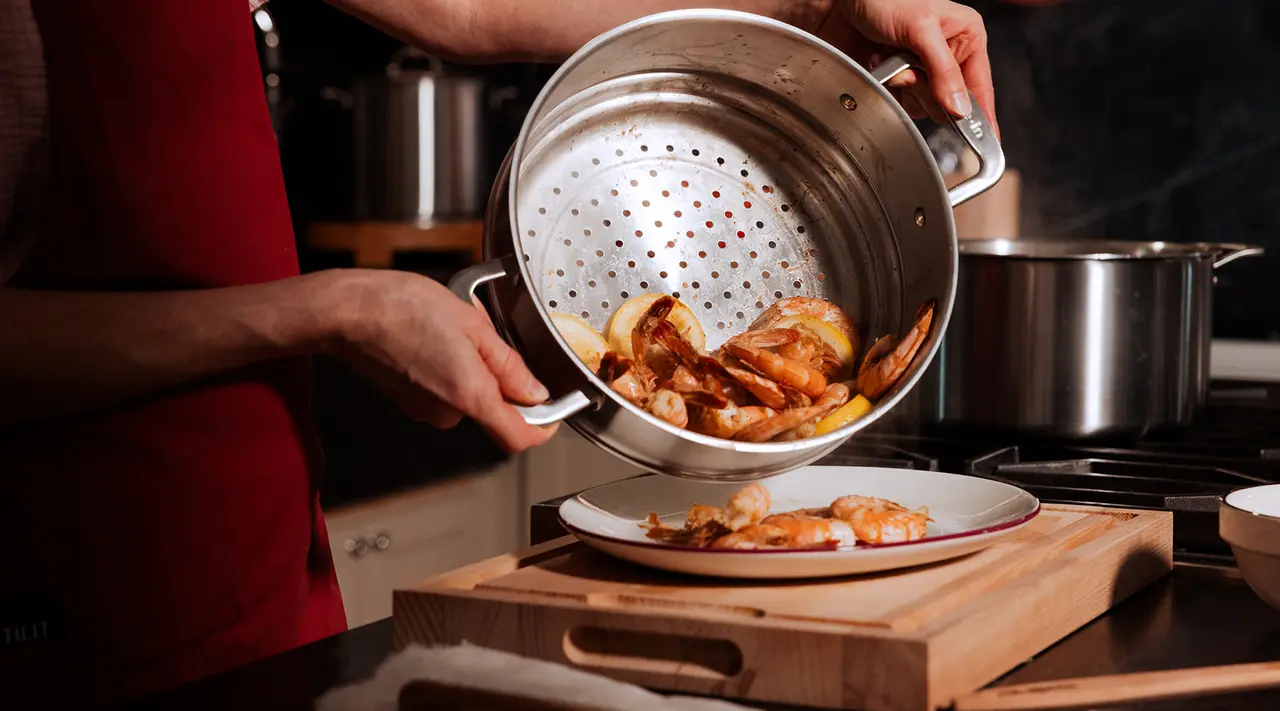Of all the cooking methods that exist, steaming is the one that I always forget about. But steam is a powerful force, capable of quickly but gently cooking food to perfect tenderness without any added fat. In addition to being a fairly hands off cooking method, tools like our Stainless Steel Steamer Basket and Stainless Clad Stock Pot Set make steaming your food even easier.
Steaming might seem boring compared to sexier cooking methods like roasting, searing, and grilling, but there are a variety of foods that are best with a little steam. Think of a perfectly cooked—or “QQ”—dumpling, with a tender-yet-chewy wrapper and juicy filling; or a tamal, freshly unwrapped from its corn husk or banana leaf. Even simply steamed greens, dressed in a flavorful sauce, can be sublime. Read on to learn more about steaming and why you should give it a try.
The Basics of Steaming

In cooking, steaming is used to achieve clean flavors and tender, juicy textures. When you heat water it begins to evaporate, and once it reaches the boiling point, the evaporation is visible as steam, which then cooks the ingredients. Steaming adds moisture to food as it cooks rather than removing it (like searing).
Since the steam itself doesn’t add any flavor, it’s an excellent way to maintain a food’s taste. Greens like bok choy, chard, and kale, as well as other vegetables like sweet potatoes, broccoli, and carrots, all maintain their flavor when steamed. Try steaming just-picked green beans or freshly dug beets, and you’ll be rewarded with peak season flavor.
While steaming has a reputation for being boring, that’s where seasoning and sauces can come in—after your food is cooked, then you can add salt, pepper, and a drizzle of oil, or something more flavorful like oyster sauce or a compound butter. Is your condiment selection out of control? That just means you can make an umami-packed dipping sauce for your steamed broccoli.
Steaming is an excellent way to avoid fat altogether, or use a minimal amount. Even a little drizzle of really good olive oil can enhance your steamed food. Steaming is also thought to better preserve nutrients, especially water-soluble vitamins like vitamin C.
Best Foods for Steaming
Many foods take well to steaming, including most vegetables, eggs, chicken (especially chicken breasts, which are prone to drying out), fish, and other seafood like shrimp and lobster. Things like dumplings and tamales are almost always steamed, and breads and desserts take well to steaming too, especially in certain dishes in East Asian and South Asian cooking.
There are various tools used for steaming, including bamboo baskets, stove-top steamers, and electric steamers. The method you choose depends on the types of food you cook most often.
How to Steam Any Ingredient

Steaming is really as easy as boiling water in a pot and adding one extra tool (ijn this case, the steamer basket) to get the job done. Make sure you have a snug-fitting lid as well, to trap the steam and speedily cook your food.
To set up your steamer:
- Fill a Stock Pot with a few inches of water. Make sure there’s at least a few inches between the top of the water and the bottom of your steamer basket.
- Put your steamer basket on the pot, cover with a lid, and bring the water to a boil.
- While you’re waiting for the water to boil, prep your food. It should be in similar sizes to ensure even cooking—slice sweet potatoes the same thickness, for example, or trim greens or broccoli florets as needed to all be about the same size.
- Once the water boils, add your food in a single layer—some overlapping is fine—cover the pot, and reduce the water to maintain a lively simmer.
Depending on the food, it’ll be done steaming in as little as five minutes (for tender greens) to upwards of 30 minutes (for chicken breasts). You can also cook different types of food at once, adding them at different times depending on their cooking rate. Test your food for doneness with a knife or a thermometer, being sure not to constantly open the lid while steaming, which will cause steam to escape (thus not cooking your food).
What Cookware Is Needed for Steaming?

Luckily, steaming only requires a few extra pieces to get started. The classic bamboo steamer baskets come in many sizes and typically contain two shelves and a lid, allowing you to stack multiple tiers of food on their flat surfaces. Originating in China, they’re used around the world but especially in East Asian cuisines.
Metal steamers are also quite common, whether as a collapsible insert that fits into a pot or as a steamer insert that rests on a stand—either way, ensuring the basket stays above the water line so that food is steamed rather than boiled.
Our 10-inch Steamer Basket, made from premium stainless steel, is designed to fit our 8 QT Stock Pot. The steamer basket rests neatly on the pot, so it’s as simple as adding a couple inches of water and setting the basket on top. You can use the basket on its own, or get the whole Stainless Clad Multi-Pot set, which also includes our Pasta Insert: cook pasta in the bottom, top it with vegetables for steaming over top, and you’ve got a one-pot (plus accessories!) meal in no time.
Ready to Shop?
Steaming is a simple method of cooking many types of food to perfection. Make it easy on yourself and pair our 5-Ply Stainless Clad Steamer Basket with our 8 QT Stock Pot. You’ll be eating juicy dumplings and tender vegetables in no time.































